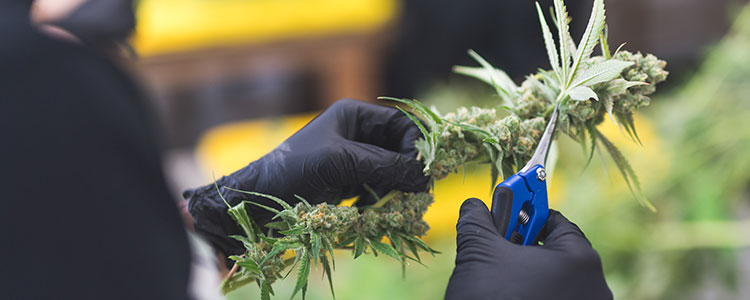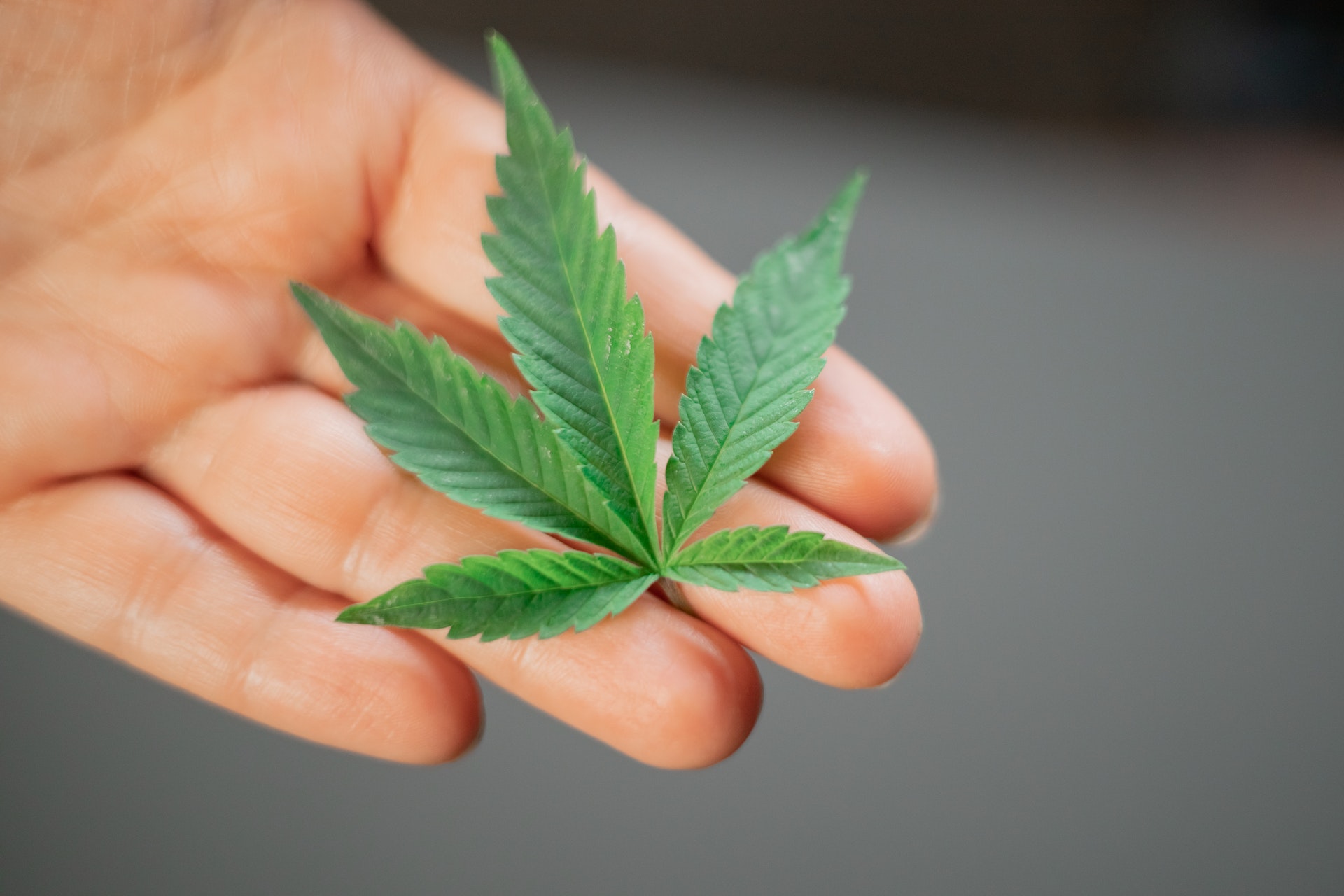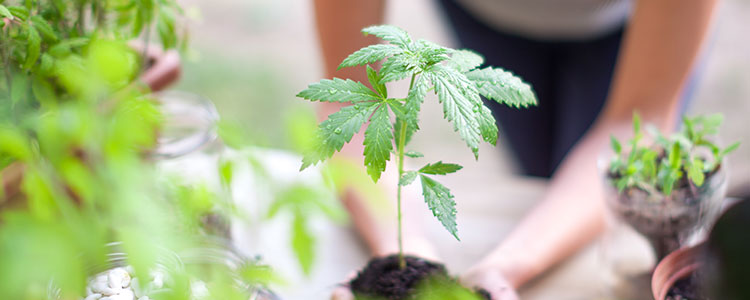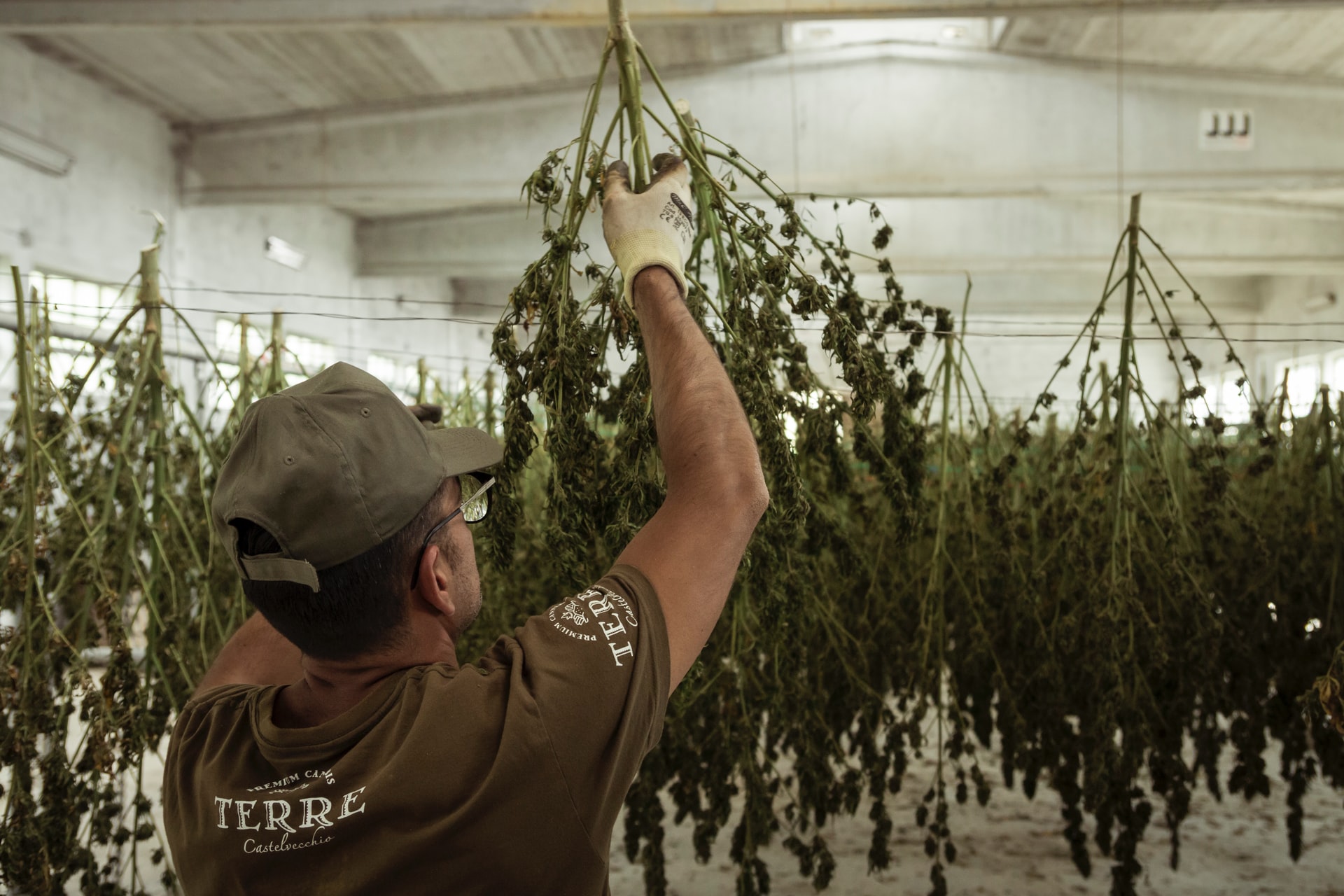-
What you will learn in this post:
For cannabis growers that have been nurturing a plant for a long period of time, trimming can be a great way to connect with it while improving the quality and shape of the buds. On the other hand, many casual growers view trimming cannabis as more of a boring chore than a satisfying step in the cultivation process.
To make this vital step in the cultivation process less monotonous, we've prepared the ultimate weed trimming guide for cannabis growers. Read on to learn the best approach to trimming your plants, along with exclusive trimming tips and tool recommendations.
What's the Point of Trimming Your Weed?
The dense nugs you buy at the dispensary don't look like that right off the plant.
Before it's ready to be smoked, cannabis must be trimmed after harvest. This removes all the excess branches, leaves, and stems that contain little to no trichomes or cannabinoids. Not only will this help shape the buds, but it also improves the quality of your marijuana.
Trimming weed will make your bud:
- More Aesthetically Pleasing. If you've ever purchased low-grade or bottom-shelf bud, you may have noticed it wasn't trimmed very well (or at all), and may still contain excess leaves and stems. However, all those luxurious pictures of top-shelf cannabis you've seen in the magazines look the way they do in part due to being carefully trimmed by their growers.
- Enhanced Aroma. When you leave stems and leaves on your plant, they’ll dry alongside the cannabis, and your weed will smell more like hay or straw than the classic marijuana smell. By taking time to trim, you aren’t just improving visual appeal – you’re helping ensure your harvest smells better.
- More Pleasant to Consume. Trimming your cannabis plants will make them much easier and more pleasant to smoke. If left on the bud when it dries, the leaves and stems can produce a much harsher and less flavorful experience.
When to Trim (Wet Trim vs Dry Trim)
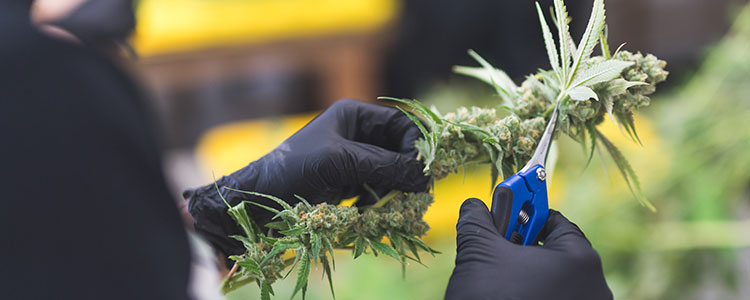
There are two primary ways to trim your cannabis plants: wet trimming and dry trimming.
Wet trimming, as the name suggests, occurs when the marijuana plant is still wet. This means that you cut down your plants during harvest and then begin the trimming process right away.
On the other hand, dry trimming will require drying your plants out for a few days before you begin trimming the bud.
Each has its own pros and cons. Let's take a look at each in more detail:
The Wet Trim Guide
Wet trimming involves pruning marijuana while the plant is still wet immediately after harvest.
There are many benefits to wet trimming. Specifically, it makes the whole trimming process easier. First, removing plant leaves is a lot easier while the plant is still fresh. The drying process will also happen much faster after wet trimming as there is less damp material that needs to dry. And because you don't need to dry your plants first, wet trimming can save a lot of space during the drying stage, as you'll only need to dry the remaining buds and not the whole plant.
Finally, wet trimming may maintain more terpenes, trichomes, and cannabinoids, giving you stickier and more flavorful buds come smoking time. This can make wet trimming a messier process than dry trimming, so be sure to wear gloves.
If you want the best-looking cannabis bud, wet trimming is the way to go. Here's how you can wet trim your cannabis plants:
1. Cut the cannabis plant branches into smaller pieces that are easier to work with.
Right out of the ground, your marijuana plants will have tons of branches, some thicker than others, and they'll all be connected like a tree.
So before you start trimming, cut these branches apart into smaller pieces that are more manageable to work with. So long as the branches are easy enough to handle and hold in your hands, they should be fine.
2. Start removing the fan leaves.
Next, focus on removing all the fan leaves connected to your bud. These iconic leaves are synonymous with the marijuana plant, but they must be removed nonetheless.
3. Trim the sugar leaves.
After you've removed all the fan leaves from your plant, you'll see that some little ones are still coming out of the bud. These are called "sugar leaves," and they also must be trimmed from the plant.
This is where things start to get a little tricky. Some people like to keep some of the sugar leaves on their bud, considering they are usually covered in trichomes. Even with their higher trichome content, sugar leaves will make your harvest harsh to smoke if left on the bud. As such, it's best to trim all the sugar leaves off regardless of how 'sugary' they are.
Also, be sure to use a trim tray to collect all the trimmings from your bud. It's possible to use excess leaves and stems later to make other products, such as edible.
4. Dry your trimmed cannabis.
Once you've removed all the leaves and shaped your bud somewhat, you should be all done trimming!
Now, you'll need to dry your bud.
If you left enough stems to hang on a clothesline or a wire, we recommend you do so. However, if you've entirely separated your bud from the stems, you'll need a drying rack for this step.
How long you'll need to dry your weed will depend on your local temperatures and humidity, but in most cases 7 - 10 days should be sufficient.
The Dry Trim Guide
Dry trimming cannabis involves trimming your bud after the plant has dried.
This method may be better for marijuana growers in dryer climates, as the drying process will take longer. A longer process in such environments will help preserve the most cannabinoids, terpenes, and trichomes on your bud.
It also, generally speaking, makes less of a mess. Whereas wet marijuana is very sticky, dry weed won’t leave the same residue on your hands. At the same time, it may be easier to break off dried trichomes during the trimming process, so you'll need to be a lot more careful to avoid losing part of your hard-earned harvest.
The step-by-step process for dry trimming is similar to wet trimming:
1. Cut the cannabis plant branches into smaller pieces that are easier to work with.
Begin by chopping your freshly harvested weed plant into smaller, more manageable pieces. You'll also want to ensure that the final branches can be easily handled while trimming. Remember to cut the branches in a way that makes it easy to hang them on clotheslines or string while drying.
2. Start removing the fan leaves.
Just as is the case for wet trimming, you'll want to begin by removing the fan leaves. Don’t worry about the sugar leaves yet.
3. Hang and dry your marijuana branches.
Once the fan leaves are removed, hang your weed branches using a clothesline, string, or wire. You'll want them to completely dry out before continuing your trim.
Again, the time necessary may vary depending on the humidity and temperature, but 7 - 10 days should be more than enough.
Once you think your bud is fully dry and ready for more trimming, try the "snap test" to see for sure. This simply involves snapping a stem in half. If it breaks cleanly, like a stick, your plants are dry enough to finish trimming.
4. Trim the sugar leaves off the dry bud.
Once your harvest has dried, it’s time to remove all the dried sugar leaves from your bud.
Ultimately, the amount you decide to leave is up to you, but the most flavorful final product will have no sugar leaves remaining.
Once you've trimmed all the sugar leaves off and have shaped the bud the way you want, you’re done dry trimming.
And, because the marijuana is already dry, you can begin to cure your weed right away!
Hand vs Machine Trimmed Weed
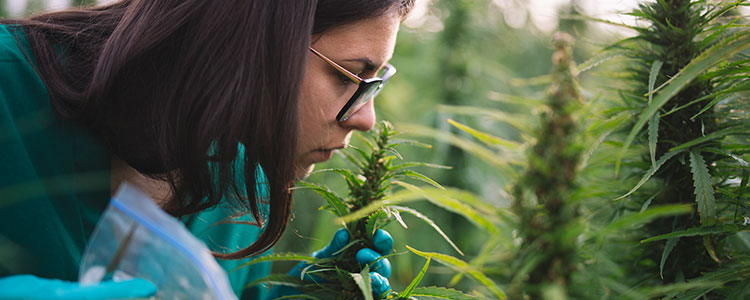
If you're growing cannabis at home, you'll likely have to do all this trimming by hand.
Machine trimmers are available for dedicated growers, making the process much less labor-intensive. But due to their high cost, they’re typically only used by commercial cultivators.
Hand-Trimmed Weed
Hand-trimming is precisely what it sounds like – it involves trimming weed by hand, usually with a pair of pruning shears or scissors.
While hand trimming can be time-consuming, it is the best method if you want the highest possible quality of the final product. With hand-trimming, you can:
- Gain greater precision while trimming,
- Preserve the maximum amount of trichomes on the bud,
- Produce much more aesthetically pleasing nugs,
- Maintain the most resin, flavors, and aromas.
Hand trimming weed will require a few essential tools, such as:
- A pruning lopper, to help cut large branches or chop the thick plant stalk itself,
- A pair of pruning shears, for the actual act of trimming your bud,
- A trimming tray, to collect trimmings and kief,
- A drying rack, to dry bud after wet or dry trimming,
- A dehumidifier, to better control the environment of your drying room.
Machine-Trimmed Weed
We'd be lying if we said that trimming weed wasn't dull. It can be tedious and time-consuming. And with the explosive growth of the cannabis industry experienced in recent years, many machine trimmers have been developed to speed up the process.
Despite the expanding market of machine trimmers, top-shelf bud is still likely hand trimmed. Machine trimmers are efficient, but are more likely to destroy some trichomes and do not trim as cleanly as a human can.
Top Trimming Techniques
Now that we’ve seen the benefits of trimming, let’s look at three of the top trimming techniques during the growth stage.
Topping Marijuana Plants
Topping is used extensively by marijuana growers. As the name suggests, it involves trimming the top of the plant as it grows.
Topping allows you to better control your plant size and save space. And by trimming off the top of the plant while it is still growing (vegetative phase), the energy and growth that would otherwise go to the top of the plant will instead go to the side branches.
The end result of topping is bigger, better buds.
Lollipopping Marijuana Plants
Another popular trimming technique is called "lollipopping". This is when a cultivator trims off the lower branches of their cannabis plants.
The technique gets its name from the end result - your plant will resemble a lollipop with all the branches, leaves, and bud at the top with a relatively empty stalk.
Like topping, trimming off lower branches allows the plant to focus its energy on the top branches, where it receives the most light and develops the best bud.
Defoliation of Marijuana Plants
Defoliation simply refers to the act of removing leaves from the plant. Defoliating marijuana plants is controversial in some growing circles, and some cultivators don't like to do so.
While your cannabis plants require their fan leaves to absorb light and grow, too many leaves could negatively affect your yields.
For instance, if your cannabis plant is significantly bushy, the leaves may be blocking light from reaching the buds, which could limit their growth. However, removing some excess fan leaves can help solve this problem and maximize your yields.
What’s Next?
Although trimming can be a time-consuming process for many cultivators, it's also exciting because the growing process is virtually finished, and your weed is nearly ready to be smoked.
Once you've finished trimming, there's one more final step before you have an amazing bud - curing.
The information in this article and any included images or charts are for educational purposes only. This information is neither a substitute for, nor does it replace, professional legal advice or medical advice, diagnosis, or treatment. If you have any concerns or questions about laws, regulations, or your health, you should always consult with an attorney, physician or other licensed professional.
